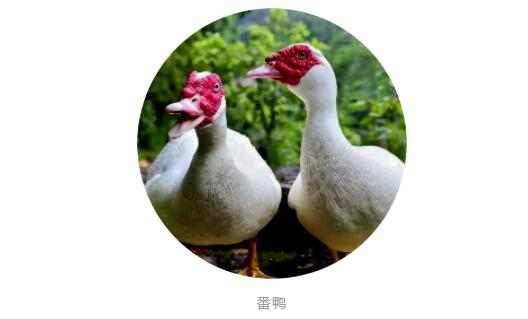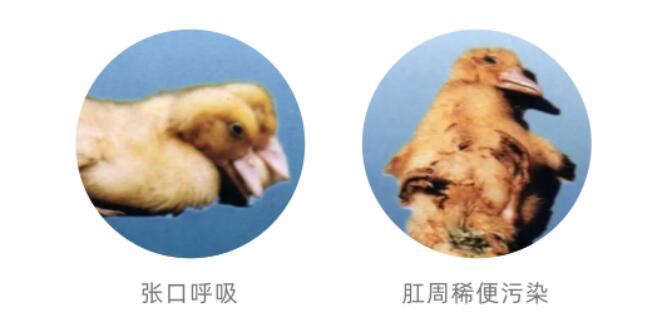
What is Muscovy duck parvovirus disease?
Muscovy duck parvovirus disease, commonly known as "three-week disease", is caused by Muscovy duck parvovirus (MDPV). The main symptoms are diarrhea, panting and soft feet. It mainly affects Muscovy ducklings between 1 and 3 weeks old. Muscovy ducks are the only animals that are naturally infected. The younger the age, the higher the morbidity and mortality rates. Muscovy ducks 40 days old can also develop the disease, but the morbidity and mortality rates are low. When the air circulation in the brooding room is poor and the concentration of harmful gases such as ammonia in the air is high, the morbidity and mortality rates are also high.
Virus characteristics
Muscovy duck parvovirus (MDPV) belongs to the family Parvoviridae and the genus Parvovirus. Under the electron microscope, there are two kinds of particles, solid and hollow, in the shape of a circular equiaxed icosahedron with no capsule and a diameter of 20~24 nm.
Muscovy duck parvovirus is a single-stranded DNA with a molecular weight of approximately 5.1kb. The virus does not have hemagglutination activity and cannot agglutinate the red blood cells of birds and most mammals.
The virus is highly resistant to the action of inactivating factors such as ether, trypsin, acid and heat. The virulence of viruses in embryonic fluid and cell culture fluid did not change significantly when exposed to 60°C water bath for 120 minutes, 65°C water bath for 60 minutes, and 70°C water bath for 15 minutes. However, the virus was very sensitive to ultraviolet radiation.

Popular features
Muscovy duck parvovirus (MDPV) is transmitted through contact and occurs all year round, mostly in winter and spring. Its incubation period is about 7 days, the course of disease is 6 to 7 days, and the death peak occurs 3 to 4 days after the onset. The incidence rate is 27 %~62%, and the mortality rate is 22%~43%. Most of the recovered Muscovy ducks have their growth and development blocked and become stiff ducks, which brings great economic losses to the Muscovy duck breeding industry and is one of the main diseases in Muscovy duck breeding.
Clinical symptoms
The sick Muscovy ducklings are depressed, anorexic, sensitive to cold, and have loose stools. Their feces are green or gray-white and often adhere to the perianal feathers. Sick Muscovy ducks often have weak legs and like to squat, and have difficulty breathing. Most sick ducks have runny noses, shake their heads, or open their mouths to breathe. In the later stages of the disease, the beak becomes cyanotic, panting frequently, becomes significantly thinner, and finally collapses and dies.
The course of the disease can be divided into three types: most acute, acute and subacute depending on age.
most acute
Most of the sick chicks aged 6 days are the most acute type. Most cases do not show early symptoms. They collapse in just a few hours and fall to the ground and die. Some of them scratch their feet and twist their heads and necks to one side before they die.
acute
Cases between 7 and 21 days old are generally acute. The main symptoms of sick chicks are listlessness, fluffy and erect feathers, drooping wings, and weakness on the legs. There are varying degrees of diarrhea, with grayish white or light green loose stools often mixed with pus and sticking around the anus.
subacute
There are fewer sick chicks in the subacute type, which are often transformed from the acute type with increasing age. The main symptoms are listlessness, a tendency to crouch, and the discharge of yellow-green or gray-white loose feces that sticks around the anus.

Pathological changes
The lesions at autopsy were mainly in the pancreas and intestine. The pancreas is pale or congested, with focal or entire surface hemorrhage, and a varying number of large, pinpoint, gray-white necrotic spots on the surface. The heart is pale, the myocardium is flaccid, and the gallbladder is enlarged. There were obvious lesions in the intestines. The intestinal mucosa is congested or hemorrhaged, showing catarrhal inflammation, which is especially characteristic of lesions in the jejunum and ileum. Some intestinal segments become extremely enlarged, sausage-shaped, and very firm to the touch. Intestinal obstruction can be seen from the connection between the enlarged part and the non-swollen intestinal segment. The intestinal cavity of the enlarged part is filled with off-white or light yellow plug-like objects.
Prevention
NO.1
The main preventive measure against Muscovy duck parvovirus is vaccination. The attenuated Muscovy duck parvovirus vaccine developed in China can provide immune protection to breeding ducks and ducklings; inactivated Muscovy duck parvovirus vaccine can also be vaccinated.
NO.2
Sick ducklings can be treated with yolk antibody neutralization. Depending on the severity of the disease, a dose of 1.0 to 1.5 ml can be injected intramuscularly. The symptoms will generally be relieved within one day.
NO.3
When introducing breeding ducks, isolation and disinfection measures should be taken, and mixed breeding is prohibited. Serological monitoring of newly imported ducks and strict disinfection of hatching eggs, incubators and brooding rooms can prevent further spread of the disease. Necessary biosecurity and feeding management methods play an important role in the prevention and treatment of this disease. Combined vaccines and antibodies Vaccination can reduce or control the occurrence and prevalence of this disease.